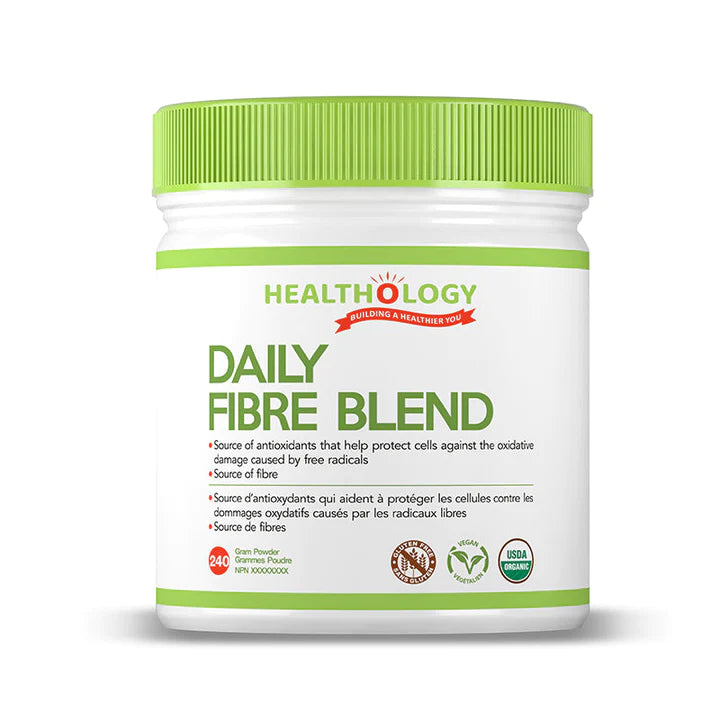- Read nutrition labels: Under the “Carbohydrates” section, look for a breakdown of the amount of fibre and sugar per serving. Choose foods with high fibre and low sugar. You’ll notice that whole grains like brown rice and whole wheat pasta contain much more fibre than their refined counterparts.
- Swap out juices for smoothies: Even “healthy” vegetable and fruit juices contain little to no fibre, so they cause spikes and crashes in blood sugar levels. Smoothies are a great way to include the fibrous parts of veggies and fruits, and you can add chia or flax for an even bigger boost of fibre.
- Try something new: Buckwheat, bulgur, spelt and quinoa are healthy carb options that are very high in fibre. Look online for recipes to help you experiment with new foods.
- Nutritional boosts: Add beans, lentils, chia and flax to as many meals as possible. Adding these foods to meals like salads, soups, and stir fries will give you a boost of not only fibre, but also other nutrients like zinc, potassium, and iron.
- Stay hydrated: Always drink plenty of water with high fibre foods to promote healthy bowel habits. We should aim for at least 2 litres of water daily, and more if we’re physically active or in a warm climate.
- Use a meal tracking tool: Many apps are available to help us calculate our daily fibre intake. You might be surprised by how little you’re actually getting each day! If you’re not getting enough, consider a fibre supplement to boost your daily intake.
Although fibre isn’t broken down by the body, it plays a central role in maintaining healthy digestion. Insoluble fibre adds bulk to the stool to keep it moving through the digestive tract to eliminate toxins and waste from the body. Adequate fibre intake prevents constipation, but it can be challenging to get enough fibre even if we’re eating a healthy diet.
DAILY FIBRE BLEND provides 3g of Certified Organic fibre per serving. Together with healthy nutrition, it prevents constipation, helps to manage appetite, and is a source of antioxidants. DAILY FIBRE BLEND is a healthy way to optimize your digestion as part of your daily wellness routine.
References
- Anderson JW, Baird P, Davis RH Jr, et al. Health benefits of dietary fiber. Nutr Rev. 2009;67(4):188–205.
- Belsey J, Greenfield S, Candy D, Geraint M. Systematic review: impact of constipation on quality of life in adults and children. Aliment Pharmacol Ther. 2010;31(9):938–949.
- Kasote DM, Hegde MV, Deshmukh KK. Antioxidant activity of phenolic components from n- butanol fraction (PC-BF) of defatted flaxseed meal. Am J Food Technol. 2011;6:604–612.
- Prasad K. Hypocholesterolemic and antiatherosclerotic effect of flax lignan complex isolated from flaxseed. Atherosclerosis. 2005;179:269–275.
- Vazquez-Ovando A, Rosado-Rubio G, Chel-Guerrero L, Betancur-Ancona D. Physicochemical properties of a fibrous fraction from chia (Salvia hispanica). LWT Food Science and Technology. 2009;42(1):168-173.
- Sayed-Ahmad B, Talou T, Straumite E, et al. Evaluation of Nutritional and Technological Attributes of Whole Wheat Based Bread Fortified with Chia Flour. Foods. 2018;7(9):135.
- Vega-Gálvez A, Miranda M, Vergara J, Uribe E, Puente L, Martínez EA. Nutrition facts and functional potential of quinoa (Chenopodium quinoa willd.), an ancient Andean grain: a review. J Sci Food Agric. 2010;90(15):2541–2547.
- Abugoch James LE. Quinoa (Chenopodium quinoa Willd.): composition, chemistry, nutritional, and functional properties. Adv Food Nutr Res. 2009;58:1–31.




